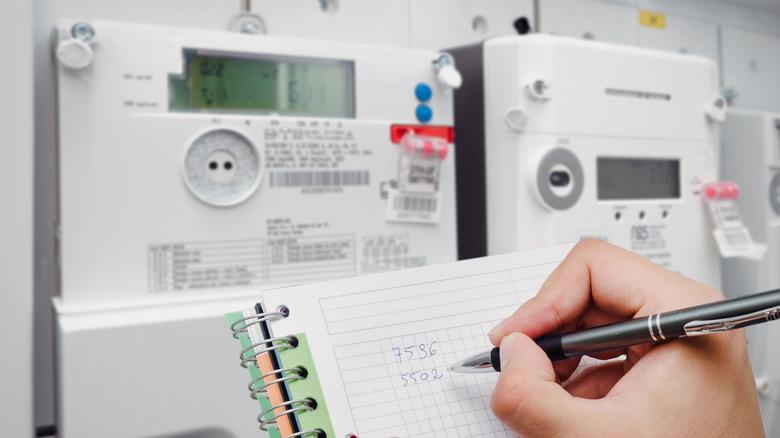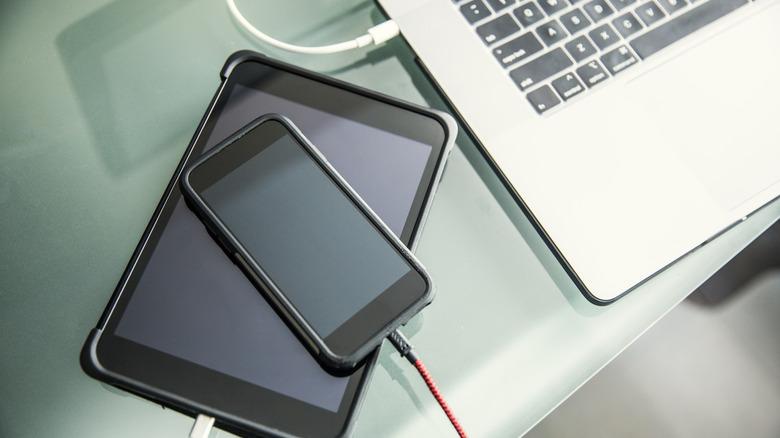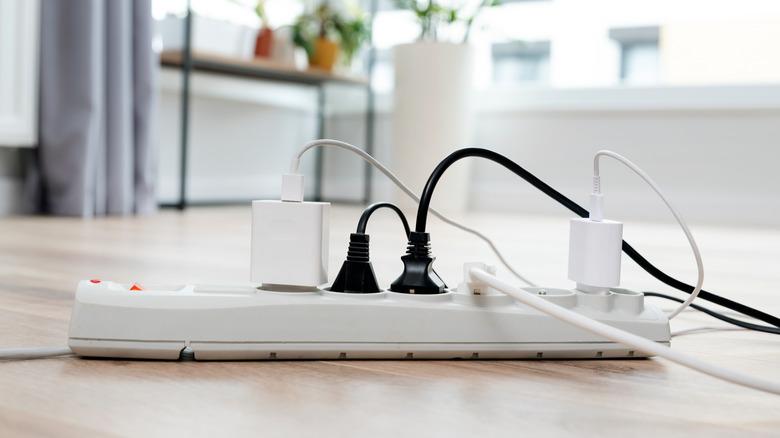Here's An Easy Way To Reduce Your Electricity Bill By 10% Every Month
Finding the most efficient home heating system depends on a number of factors, many of which I discovered when I first installed air-source heat pumps in my home in 2015. (Since then, I've worked as a professional energy research journalist.) One of the key things I've discovered along the way is that I could lower my own electricity bills by around 10% with very little effort, no large cost outlays, and no sacrifices to my standard of living.
Like nearly 70% of Americans surveyed by MarketWatch, I once had no idea what "vampire energy" was. That's the electricity that electronics, appliances, and other home equipment quietly consume without you realizing it. Vampire energy accounts for anywhere between 5% and 40% of the electricity you use in the home, depending on the study. With the average residential utility bill in the U.S. at just under $137 per month, that's somewhere between about $82 and a whopping $656 per year you can save by cutting down on electricity that's being consumed even if you're not actively using it.
Devices you can unplug to lower your electric bill
There are many ways to save money on your electric bill, but the easiest way is to just unplug things. This mostly involves walking about your residence and seeing which devices are unnecessarily running. Does your microwave need to always display the time? Your stove and refrigerator may have clocks as well. How many clocks in one room do you need? You don't want to unplug your refrigerator, and probably not your stove either, but you may be able to unplug your microwave without much effort.
Follow the same rule with other appliances, such as your toaster, coffee grinder, or coffee machine. If you set your coffee machine to brew you a cup of coffee at a certain time of day, then keep it plugged in. Otherwise, it's using electricity to run its internal clock when you don't need it to. Then walk around your home unplugging stereos, DVD players, empty battery chargers, surge protectors, printers, paper shredders, heated pet beds, humidifiers, routers, water coolers, or other devices that you aren't using at that moment or haven't used in years.
You can also unplug your phone and laptop chargers when you're not using them. Chargers convert the AC electricity coming into your home into the DC that your phone and laptop batteries use — even when you're not charging them. You likely also have devices that run in "standby" mode, waiting around for you to press the remote to turn them "on." (Surprise: they're already "on.")
Simple devices you can use to shut off unneeded devices
Hunting vampire energy can also be a time-consuming task or one that's easy to forget. Some outlets are also hard to reach. There are a few cheap devices you can use to make the job easier. If an outlet behind your TV or gaming device is not easily accessible, use an extension cord with a power strip so that you can turn off multiple devices at once. If that's still too hard, place a remote-controlled on/off switch into the wall outlet, plug the power strip into the remote-controlled switch, then plug your devices into the power strip. One click of the remote control and you've turned off all your devices.
If you're forgetful to do even that, or if you want your toaster, microwave, and coffee maker ready for your use in the morning and don't want to plug them all in individually, set a mechanical or digital timer that allows you to turn on or off all your devices at set times during the day. The virtues of mechanical timers are that they are inexpensive and use no electricity themselves, but even a digital timer can save you money.
Your utility service may provide a website where you can monitor your real-time or hourly use of electricity, pointing out times of day or year when you're using more or less electricity. If your utility company charges you different rates for electricity at different times (called "time-of-use" rates), you can use your timer to run appliances (like dryers or dishwashers) to run during off-peak hours.
Smart devices you can use to reduce your electricity use
If you're in the market for new appliances or devices, look for smart kitchen appliances that allow you to use less electricity — or use electricity during off-peak hours. But don't waste your money on a smart appliance that actually uses more electricity being "smart" than it saves you. A voice-activated faucet is probably not going to lower your electricity use, but a smart EV charger that can charge your car during off-peak hours will. For existing appliances, use a smart plug or smart power strip that you can use to remotely control outlets with your phone. Smart power strips can also detect vampire energy being consumed by devices in standby mode.
There are smart thermostats for every home and budget that can allow you to set your thermostat to raise or lower your home's temperature during times of day when you're at work and return it to your desired temperature soon before you return home. Some smart thermostats come with built-in artificial intelligence that can monitor your use of particular rooms, or learn when you are home so that they can heat or cool your home using the lowest cost of electricity. Whole-energy monitors take smart thermostats one giant leap forward, allowing you to monitor individual devices or circuits (like a bedroom) to find where those vampires are hiding.



